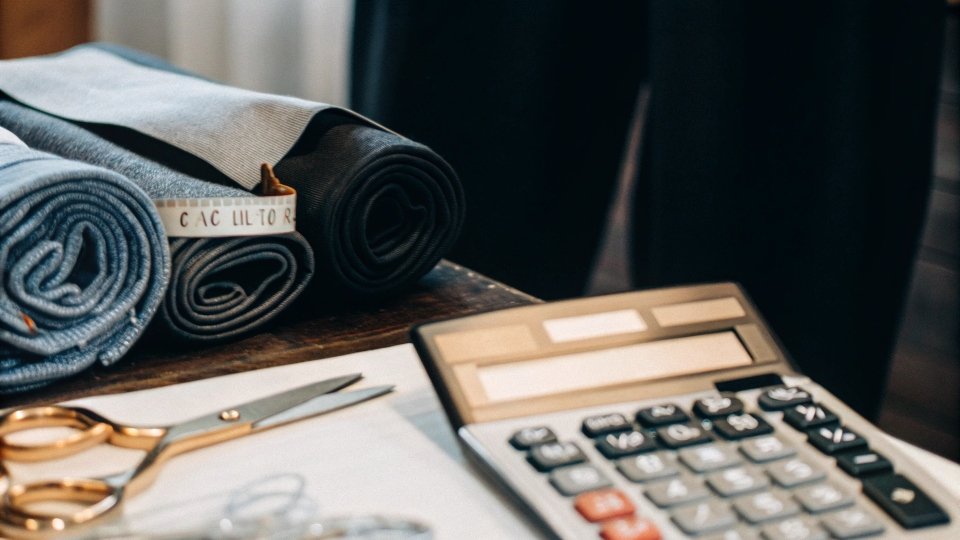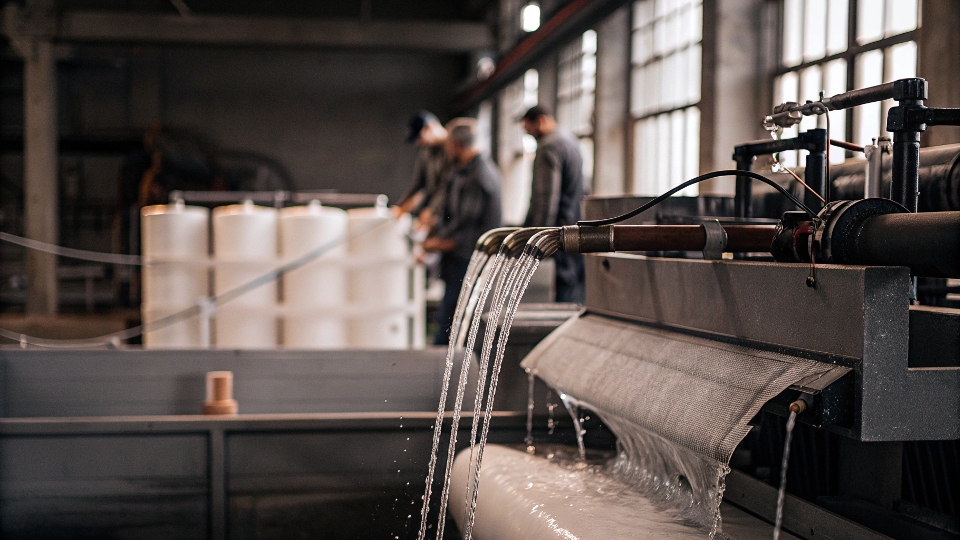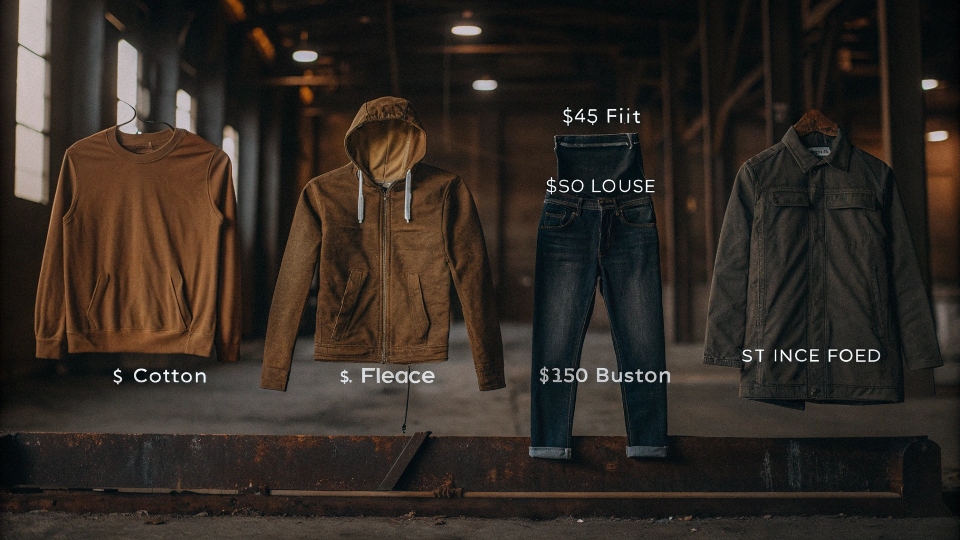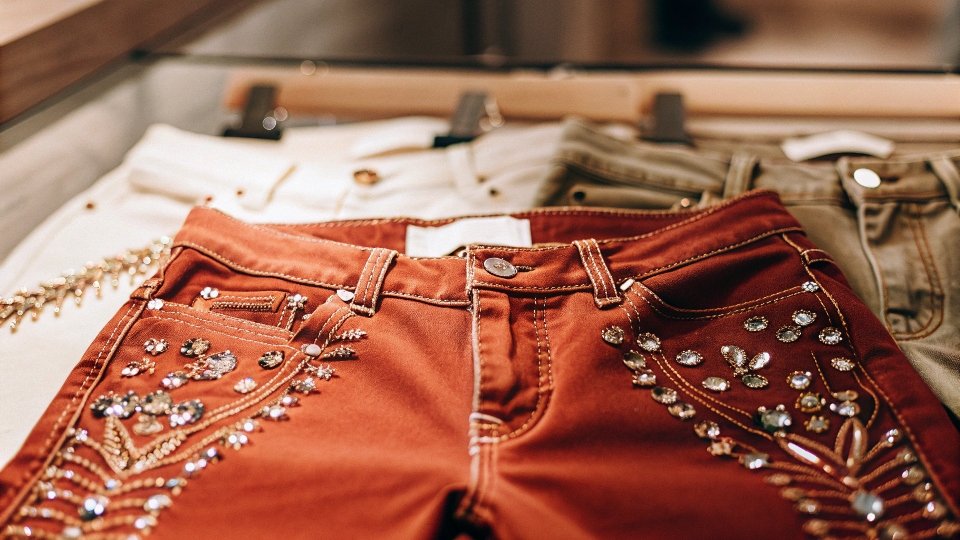You want to start a denim line, but you cannot get a straight answer on cost. This makes it impossible to create a budget. I will break down the real numbers for you.
The factory cost (FOB price1) to manufacture a pair of jeans typically ranges from $8 to $25. This price is built from three main things: the fabric, the labor to cut and sew, and the complex washing and finishing processes.
For over two decades, my life has been calculating these costs every single day at my factory, DiZNEW. When a designer like Dean from New York sends me a new design, he needs a clear, honest price to see if his idea is viable for the market.
The final price is not one number; it is a story told by the fabric you choose, the complexity of the design, and the look you want to achieve with the wash. I am going to walk you through each chapter of that story, so you can understand exactly what you are paying for and make smarter decisions for your brand.
How much does it cost to get jeans manufactured?
You need a clear number for your business plan. But when you ask for a price, you get vague answers. This makes it very hard to move forward with your project.
A standard pair of jeans will cost you between $8 and $25 per unit from the factory. This price, called the FOB price, includes everything: fabric, zippers, buttons, all the sewing labor, washing the garment, and the factory's margin. The final price depends on your choices.
Let's break down that $8 to $25 range. This is the price for the finished product, ready to be put on a ship at the port in China. It is the most important number for you to know.
The biggest factors that move the price up or down are the fabric and the wash. A simple, lightweight denim with a basic rinse wash will be closer to the $8 mark.
A premium, sustainable selvedge denim with a complex, hand-sanded vintage wash could easily be over $25. It is all about the materials and the time it takes to make your vision real.
| Cost Component | Description | Estimated Cost per Pair (USD) |
|---|---|---|
| Fabric | The biggest variable. Basic denim might be $2.50/meter, while premium selvedge can be $10/meter. Jeans use about 1.5 meters. | $4.00 - $15.00+ |
| CMT (Cut, Make, Trim)2 | The labor for cutting the fabric and sewing the jeans. More complex designs3 with more seams cost more. | $2.50 - $5.00 |
| Trims | All the hardware: buttons, rivets, zippers, labels. A standard zipper is cheap, but a high-quality YKK zipper can be over $1 alone. This category costs about ¥5-¥20 in total. | $0.70 - $2.80 |
| Washing & Finishing | The process that gives jeans their look and feel. A simple rinse is cheap, but multi-step vintage washes with hand-distressing are expensive. | $1.00 - $8.00+ |
Why does it take 7500 litres of water to make a pair of jeans?
You hear about the huge environmental impact4 of making jeans. You want to build a responsible brand, but the numbers about water usage are truly shocking and concerning.
That 7,500-litre figure includes the entire lifecycle, but the vast majority is used to grow the conventional cotton. Modern factories have drastically cut water use in the dyeing and washing stages with technologies like ozone washing, lasers, and advanced water recycling systems.
That 7,500-litre number is famous, and it is a good way to get people's attention, but it needs more context. The single biggest user of water is agriculture.
Growing the cotton for one pair of jeans can use over 6,500 litres of water, especially in dry regions. The manufacturing process itself—the dyeing and washing—uses the rest.
In my factory, this is an area we have focused on for years. The old way of stone washing used tons of water. Today, we use new technology that gives better results with a fraction of the water. A responsible brand must look at both the farm and the factory.
Water Usage: Traditional vs. Modern Methods
| Process Stage | Traditional Method | Modern Sustainable Method | Water Savings |
|---|---|---|---|
| Color Fading | Stone Washing (with Pumice Stones) | Ozone Gas Treatment | 90%+ |
| Distressing | Hand Sanding & Chemical Sprays | Laser Technology | 95%+ |
| Overall Process | Multiple Draining & Refilling baths | "Nano-Bubble" or E-Flow Technology | 80%+ |
| Wastewater | Discharged after basic treatment | Internal Water Recycling Plant | Water is cleaned and reused multiple times. |
Choosing a manufacturing partner with these modern technologies is the single best thing you can do to reduce your brand's water footprint.
How much does it cost to manufacture clothing?
You now have a good idea about jean costs. But what about other items for your collection, like a t-shirt or a jacket? You need a sense of how these different items compare in price.
Clothing manufacturing costs vary widely by product. A simple cotton t-shirt might cost $2-$4 to make. A fleece hoodie could be $7-$15. A complex, lined jacket could cost $20-$50 or more. The main drivers are fabric5 cost, construction complexity, and order quantity.
The basic principles are the same for any garment. The cost is always a combination of fabric, labor, and finishing. A t-shirt is simple.
It uses less fabric, which is usually a cheap jersey knit, and it has very few seams, so the sewing time is short. A jacket is the opposite.
It uses a lot of expensive fabric, might have a separate lining, and has many complex features like zippers, pockets, and a hood. The labor time is much, much longer. Understanding this basic logic will help you estimate the cost of any piece you can imagine.
Estimated Manufacturing Costs (FOB) by Garment
| Garment | Key Cost Drivers | Estimated FOB Price Range (USD) |
|---|---|---|
| Basic T-Shirt | Cotton jersey fabric, simple construction. | $2.00 - $4.00 |
| Fleece Hoodie | Heavier fleece fabric, zipper, drawstrings, pockets. | $7.00 - $15.00 |
| Denim Jeans | Denim fabric, complex washing, hardware. | $8.00 - $25.00 |
| Lined Jacket | Technical outer fabric, insulation, lining, multiple zippers and pockets, complex construction. | $20.00 - $50.00+ |
What jeans cost $10,000?
You see news about jeans selling for thousands of dollars. It makes you wonder what could possibly justify that price, and if it has any relation to the real cost of making them.
Jeans that cost $10,000 are luxury art pieces, not everyday clothing. The price comes from brand name prestige, extreme rarity, and costly embellishments like real diamonds or gold hardware. The manufacturing cost is a tiny fraction of the final price.
This is a world completely separate from manufacturing. When a brand sells a pair of jeans for $10,000, they are not selling a piece of clothing.
They are selling a story, a status symbol, and a piece of art. The actual cost to produce the physical jeans might only be $50 or $100, even with very high-end materials. The rest of the price tag is pure brand value.
It's driven by marketing, scarcity, and the desire for exclusivity. These are collector's items, like a painting or a sculpture. They have almost nothing in common with the jeans that you and I wear every day.
What Creates a $10,000 Price Tag?
- Extreme Branding: The logo and name of a top luxury house like Gucci or Chanel. You are paying for the brand's reputation.
- Precious Materials: These are not your standard brass buttons. We are talking about custom-made rivets and buttons made of sterling silver, gold, or even platinum, often decorated with real diamonds or other precious gems.
- Bespoke Handwork: The distressing and decoration may be done by a single, famous artist over many days. This includes intricate hand embroidery, painting, or other artisanal techniques that cannot be replicated on a production line.
- Extreme Scarcity: Often, only a handful of these pieces are made for the entire world, creating intense demand among very wealthy collectors.
Conclusion
The cost to make jeans depends on fabric, labor, and washing. Understanding these core parts helps you build a great brand and find the right factory partner for your specific needs.
-
Understanding FOB price is crucial for budgeting your denim line effectively. ↩
-
Understanding CMT helps you grasp the labor costs involved in making jeans. ↩
-
Explore how design complexity influences the overall cost of producing jeans. ↩
-
Learn about the ecological footprint of denim and how to mitigate it. ↩
-
Explore how different fabrics impact the overall cost and quality of your jeans. ↩


[^2] of a pair of jeans](https://diznewjeans.com/wp-content/uploads/2025/08/a-standard-pair-of-jeans-will-cost-you-between-1.jpg)








